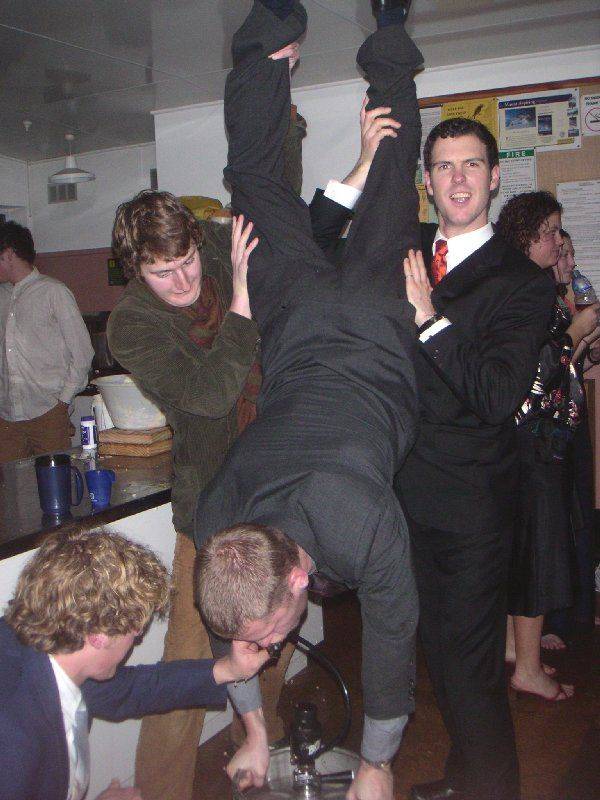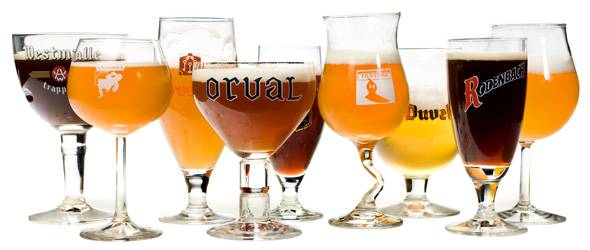So you like beer. Well, who doesn’t? Probably the people who have never had a good one. Unfortunately there are a number of those people still out there, even in today’s primo beer environment. Exploring the world of craft and international beer can be quite a journey, so in future columns I hope to be your tour guide as we examine the universe of beers both near and far. But for now, let’s simply consider how we got to where we are. If your experiences have been anything like mine, they may have gone a little something like this.
A long time ago, in a plastic cup far, far away …
 For many of us, the journey began with a beer that was a combination of cheap, available, and ice cold. Macro-brewed 30-packs and Super Bowl commercials were the focus of your beer drinking world. When you attended parties, the first thing you took note of was the location of the ice chest. And if there was a keg, you knew you were in the right place at the right time. Since all the beer you drank was ice cold and pretty much tasted the same, you found yourself making the drinking experience interesting by playing drinking games, guzzling out of some plastic apparatus or possibly suspended upside-down with your lips coupled to the outflow end a keg faucet.
For many of us, the journey began with a beer that was a combination of cheap, available, and ice cold. Macro-brewed 30-packs and Super Bowl commercials were the focus of your beer drinking world. When you attended parties, the first thing you took note of was the location of the ice chest. And if there was a keg, you knew you were in the right place at the right time. Since all the beer you drank was ice cold and pretty much tasted the same, you found yourself making the drinking experience interesting by playing drinking games, guzzling out of some plastic apparatus or possibly suspended upside-down with your lips coupled to the outflow end a keg faucet.
On your beer horizon was the non-light version of those very same beers, in addition to Corona, Guinness, and some clear, mysterious, fruit-flavored, beer-type thing. You might have drunk one of these beers in order to stand out in a crowd or to impress upon someone that you were not like the rest of the “heathens.”
The phantom six-pack
One day you found yourself unable to decide what beer to purchase while standing in front of the cooler at the liquor store. You were ambivalent toward macro beers and you just wanted something a little different. An interesting label caught your eye and you said to yourself, “That’s different, let’s give it a try.” So you drank it icy cold, but this time, you noticed something else in there. “Hey! This is different,” you said to yourself. “What’s this flavor stuff doing in my beer?”
Maybe that flavor stuff was the byproduct of a fruit- or honey-flavored lager. And maybe it tasted like you expected it to. Feeling bolder in your new discovery, you now start looking for decorative labels as you explore mix-and-match sixes. You really don’t know a lot about beer yet, but you’re eager to tell people about “this one beer” you just tried.
You beer horizon now consists of anything Killian’s, Heineken, Oktoberfest, and even those clear, mysterious, fruit-flavored, beer-type things.
The dark side
You’ve now embraced the fact that you like “real beer” and are beginning to understand how much more powerful the dark beer really is. You’re open to letting go of quantity in search of quality. Now you have to take a moment to look all the way down the tap lineup in a bar before making a decision. Luckily, you can now identify a few beers by the tap handle. You know the difference between a lager and an ale and have decided that you prefer ales to the insipid lager you once championed. Well, except for those odd “dark German beers.”
One day you mix British beers like Bass and Harp with Guinness and figure out that color of the beer does not equate to the thickness of the beer. You also discover that you can taste more flavor in beer that is merely cool, not icy. You learn that there are a number of craft beer companies that you really kind of like and begin to learn about the different styles of beer that they brew.
Your beer radar has now expanded to include beers starting with “Hefe,” Mexican imports besides Corona, British beers, and on occasion one of those mysterious, light-colored, fruit- and spice-flavored Belgian Wit beers.
A new hop
You’re now seeking out extreme beers. On this flavor palate thrill ride you have discovered hops. You share with others the tale of a brewery you recently visited that makes this unique beer with more hops than barley. Suddenly, aged beers and Belgian beers are what you’re after, and whenever you travel you bring some beers back to share with your newfound fellow enthusiasts. You eagerly discuss beers that contain coffee, rye, coriander, heather, and black currants, and that were aged in oak bourbon barrels or other types of wood. You may have even tried to make your own beer by now; at the least, you know a few people who do.

Your “wine cellar” is now stocked with large-format bottles of Belgian beers, barley wines, and limited release, large-format domestic craft beers. You’re accustomed to purchasing just about anything with the word “Imperial” in it, and you like the fruit-based, sour beer-type things and even know that they have to be made with natural yeast in Belgium.
The beer strikes balance
You have now triumphantly determined what all these different flavors are in your beer. More important, you are beginning to realize that you can’t drink a lot of the really potent stuff in one sitting without getting serious palate fatigue. You also begin to discover a whole slew of beer that were previously not in-your-face enough. You begin to appreciate the delicate balances found in some of the German beers, like helles, kolsch, or Munich dunkel, and you still appreciate the rich yet gentle dopplebock. You also find yourself saying “Czech, please” before and after a meal.
The time of year is now making an impact on your beer ordering. This is not to say that your “lawnmower beer” can’t be the beer you have one of and then decide to go fire up the riding mower and drive it around in two feet of snow. You also might enjoy a clear, fruit-infused mead, like the one you had while traveling overseas and now have no idea where to find it in the States.
Return of the light beer
I’m not implying that you have now forsaken all the beers you grew to cherish in favor of light beers once again. However, you may no longer outwardly bash the macro-breweries anymore. Maybe you have begun to understand how amazing the consistency and balance is that such breweries have maintained in a light format. You now understand the historical and economical reasons why the American light lagers have become what they are today, and appreciate them for what they are. You might even drink one ice cold for old time’s sake out in public. Cans are no longer taboo either, since you now realize that they exist due to economics and generally preserve beer quality better than bottles do.
Your beer training is now complete, but your journey is far from over. You can now drink and enjoy just about any type of beer in its proper setting. Well, except for those clear, mysterious, fruit-flavored beer-type things.








